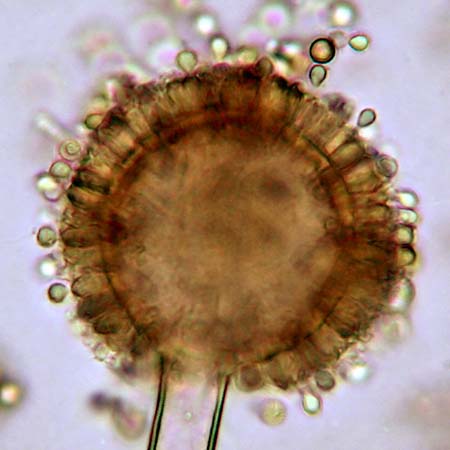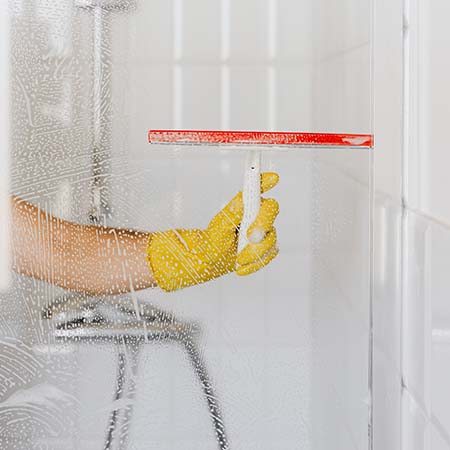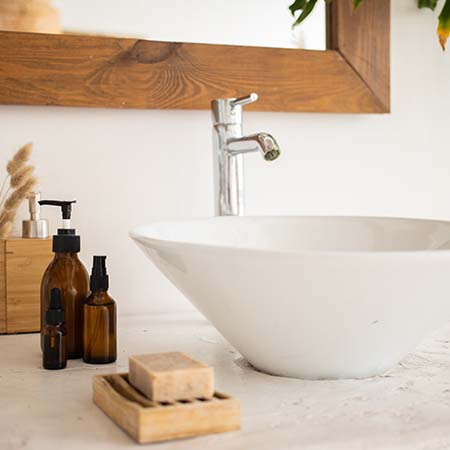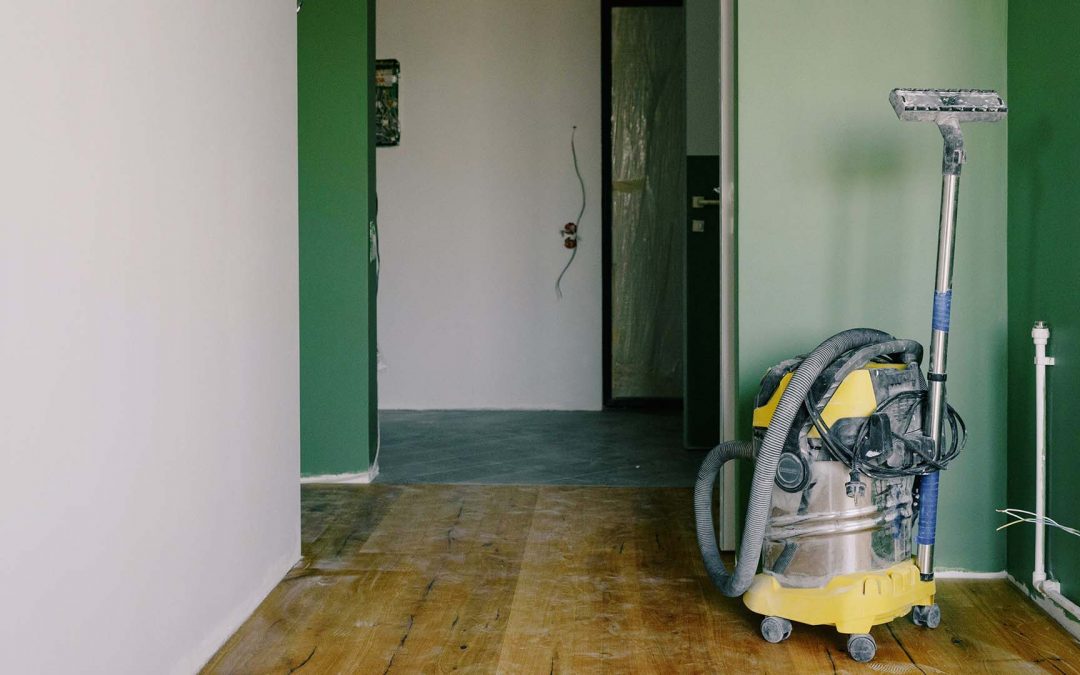Cleaning company: You’ve noticed some strange patches of black spots on your walls, and you’re worried that your home may have a mould infestation. You’re not sure how to tackle the problem, so you decide to do some research.
Mould can be a concerning issue for any parent, as it can cause health issues and damage to your home. Fortunately, there are steps you can take to safely identify, prevent and get rid of mould in the home. In this article, we’ll explain helpful tips on how to do just that so you can keep your family safe and healthy.

Mould under a microscope
Types of Mold in Your Home
Many types of mould can be found in the home. The most common and dangerous type is black mould, or Stachybotrys chart arum. It can release toxins into the air and cause health issues. Below are some other common types of moulds that can be found in your home.
Black mould
As described above, usually forms on damp surfaces, such as walls or ceilings with poor ventilation. Other types of mould that are less dangerous but may still cause health problems.
Aspergillus
Is a family of fungi that are commonly found in the environment and vary in colour from black to white, depending on the species. It typically grows in warm, humid environments, such as bathrooms and basements, although it can also grow in other places. The most common effects of this type of mould include allergic reactions, asthma, and other respiratory issues.
Alternaria
Is usually found outdoors but can also grow indoors on wet surfaces. It is a black or dark green mould with a velvety texture and produces large spores that can easily be spread in the air when disturbed. This type of mould typically causes allergic reactions such as sneezing, runny nose, hives, and itchy eyes.
Cladosporium
Is a type of mould that is green or black and can look leathery or velvety on surfaces. It typically grows in areas with high humidity, such as bathrooms and basements, but can also grow outdoors. This type of mould commonly causes allergic reactions including sneezing, coughing, asthma, and skin irritation.
Steps to Prevent Mould Growth
Mould can be a pesky problem in any home, so it’s best to take preventative steps to avoid its growth. First and foremost, protect your home from excessive moisture by keeping humidity levels below 50%.
Cleaning and fixing areas that are prone to water leakage or condensation, such as windows and bathrooms, is highly recommended. Keep your house clean often by the removal of dirt and dust with vacuum cleaners can also help reduce the chances of mould growth.
Additionally, use air conditioning systems and dehumidifiers to properly circulate air throughout the house and reduce humidity. Lastly, make sure all clothes are completely dry before storing them away since any damp fabric provides an ideal environment for mould to appear. Taking these measures will ensure that your home environment remains fresh and rosy!

Be cautious when cleaning up mould
How to Clean Up Small Amounts of Mould Safely
Cleaning up small amounts of mould can be done safely with a few precautionary steps. Before starting, it’s important to ensure the area is well-ventilated, as mould spores may become airborne during the cleaning process.
Next, protect your skin and clothing by wearing gloves and eye protection. We will strongly recommend that you wear a dust mask particular N95 masks. These masks can be found at your local Home Depot store. Note we are not affiliated with this website whatsoever.
To clean up small amounts of mould, start by using a scrub brush and diluted commercial bleach solution (1 cup per gallon) or another EPA-registered product. Thoroughly scrub the entire affected area and let it dry completely.
Finally, use a vacuum to remove any remaining debris or dirt from the cleaning process if needed. Following these tips will help keep you safe from exposure during cleaning.
Natural Remedies that can Help Get Rid of Mould
There are several natural remedies could help to rid your house of this pesky problem. Vinegar and baking soda are both commonly used mould-fighting substances.
To make a cleaning solution, simply mix equal parts of vinegar and water and apply it directly to the affected area. Baking soda can also do the trick; mix 1/2 cup of bicarbonate soda with 1/2 cup of water in a spray bottle and apply it to the mould before wiping or scrubbing it away with a sponge or brush. You may also want to try hydrogen peroxide. Be sure to test it in a small area before committing to the mixture to avoid damage on surfaces.
Alternately, tea tree oil is an effective antifungal substance that works great as an added ingredient in homemade mould removers. For maximum effectiveness, you can use these natural remedies together for a healthier home!
Hire a Professional
If you are dealing with a large mould infestation in your home, it is important to contact a professional who is experienced in getting rid of it. Doing this job yourself can be difficult and time consuming, and there are potential risks if the fungus is not removed properly.
A licensed professional will have the right equipment and cleansers to take care of your mould problem quickly and safely. They can also help to identify why the mould grew up in the first place, allowing you to make changes that prevent future infestations. Hiring a professional can save you time, unnecessary health risks and stress while ensuring that your home’s mould is correctly removed.

Mould grows in areas where it’s moist including sink drains!
Tips for Future Mould Prevention
Mould prevention can be a tricky business, but there are some basic tips to get you started. Again, start by controlling humidity and moisture in the home to stop mould growth.
Keep windows closed during high-humidity weather and use exhaust fans when cooking or showering. It’s also important to regularly inspect areas with the most potential for moisture intrusions such as bathrooms, crawl spaces and basements. Look for anything leaking or condensation near windows, cracks or walls.
Finally, it’s wise to clean any existing mould immediately with a detergent and water solution and then dry completely to ensure that the moisture does not enable further mould growth. Following these tips will give you a fantastic foundation for safeguarding your home from future mould problems!
Conclusion
Mould can be a serious issue in the home, but with helpful advice and best practices, it can be safely removed. Start by using protective gear to clean up small amounts of mould, or consider natural remedies. For larger infestations consider hiring a professional.
Finally, make sure to take preventive measures to ensure that mould does not return in the future. With these helpful tips, you can soon have a healthy and mould-free home. If you’d like this article be sure to check out our other ones such as: “Types of bacteria and viruses that are found in your house” and “How much does it cost to clean a house in Toronto?” – Cleaning company.
Frequently Asked Questions
1. What is mould?
Mould is a type of fungus that grows in damp environments and can cause health problems if it becomes airborne.
2. What does mould look like?
Mould can take on many different shapes and colours, ranging from black to green and yellow. It often appears as a fuzzy growth on walls or other surfaces. Look at the first image above to see a close up image of mould.

Cleaning company: Let us handle your cleans so you can enjoy some free time
Cleaning company
The Cleaning Tribe is dedicated to helping families keep their homes clean and healthy. Our team of professional cleaners provides a wide range of services to help families with any general cleaning issues they may be experiencing.
For more helpful information on maintaining a healthy home or how to book our services, visit our website or call us on our live 24/7 hour line at (416) 292-0032. Start you cleaning journey today – Cleaning company.
Cleaning Tribe Inc.
2300 Yonge St #1600, Toronto, ON M4P 1E4
